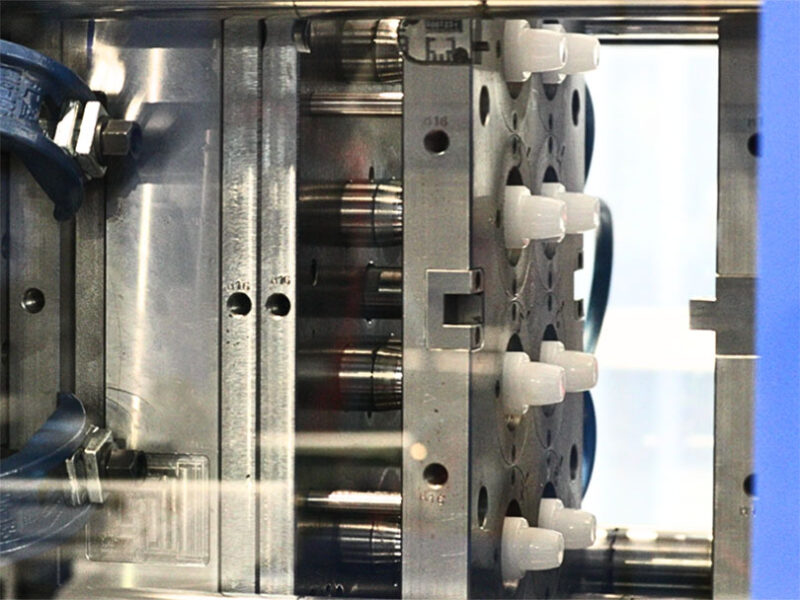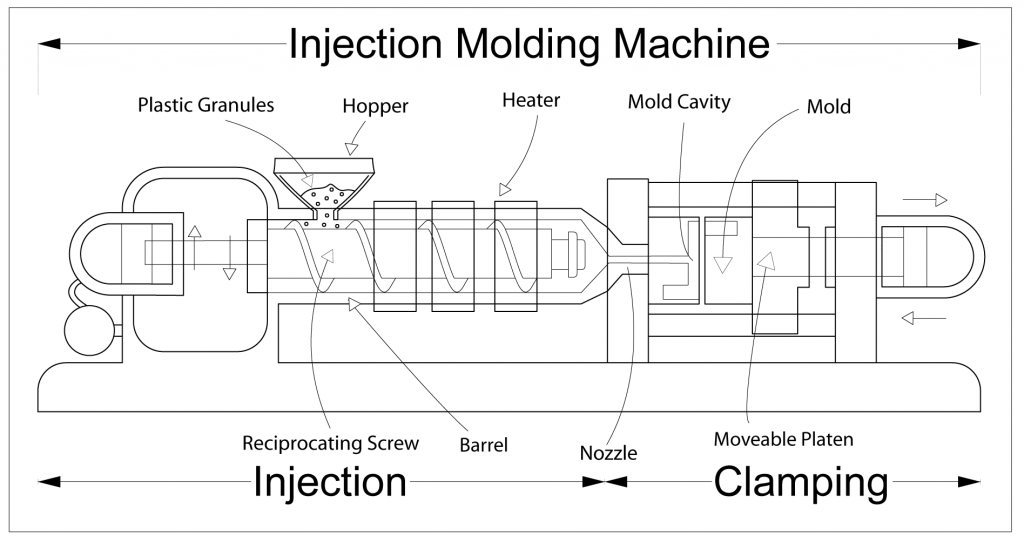Comprehending the Fundamentals of Plastic Shot Molding Procedures
Plastic injection molding acts as a foundation of modern-day production, offering a methodical technique to generating complex elements with precision. This procedure not just incorporates the essential actions of melting and infusing products right into molds however additionally involves a nuanced understanding of different influencing aspects, such as temperature level and pressure. As sectors increasingly demand efficiency and quality, the complexities of this method come to be a lot more essential. Exploring these important elements could reveal how even minor changes can lead to substantial improvements in manufacturing end results, elevating inquiries regarding the capacity for development in this recognized process.
What Is Plastic Shot Molding?
Plastic shot molding is a commonly utilized manufacturing process that changes thermoplastic and thermosetting products into precise and complicated forms. This technique is preferred for its ability to create high quantities of identical get rid of remarkable precision, making it an essential approach in numerous sectors, including vehicle, consumer goods, and clinical tools.
The process includes thawing the picked plastic material and injecting it into a mold and mildew under high stress. The mold, developed to the requirements of the wanted part, allows the molten plastic to take form as it solidifies and cools. When the product has actually set, the mold is opened, and the completed part is expelled.
Plastic shot molding offers several advantages, including minimized waste, consistency in production, and the ability to integrate detailed layouts that might be challenging with various other producing techniques. In addition, it supports a wide variety of products, each giving distinct residential or commercial properties that can be customized for certain applications. As sectors proceed to innovate, plastic injection molding stays at the center, enabling the growth of innovative items that meet developing consumer demands.
The Injection Molding Refine
The shot molding procedure is a sophisticated technique that entails a number of key phases to generate top quality plastic components. Plastic pellets are fed right into a warmed barrel where they are melted into a viscous fluid. This molten plastic is after that infused under high pressure into a precision-engineered mold and mildew, which shapes the material right into the desired type.
Once the mold is filled up, the plastic is enabled to solidify and cool, taking the form of the mold and mildew cavity. Cooling time is critical, as it impacts the cycle time and the final residential or commercial properties of the molded component. After enough air conditioning, the mold and mildew opens up, and the ended up component is expelled utilizing ejector pins.

Materials Made Use Of in Shot Molding
Different materials can be used in the injection molding procedure, each offering special buildings that accommodate details applications. One of the most commonly utilized materials include thermoplastics, thermosetting plastics, and elastomers.

Thermosetting plastics, like epoxy and phenolic resins, undergo a chemical adjustment during the curing procedure, causing a stiff, stringent framework. These products are ideal for applications calling for high warm resistance and architectural stability, often used in automotive components and electrical insulators.
Elastomers, including silicone and rubber-based materials, give adaptability and strength. Their special properties make them ideal for applications that require flexibility, such as seals and gaskets.
Furthermore, specialty products like bio-based plastics and compounds are getting traction for their environmental benefits and boosted performance attributes, broadening the scope of shot molding applications in numerous sectors. Understanding the residential properties of these materials is crucial for choosing the suitable kind for particular projects.
Benefits of Shot Molding
Shot molding stands out as a very reliable production process that uses many advantages for generating complex components with precision. One of one of the most considerable benefits is the ability to produce intricate layouts that would be difficult or challenging to accomplish with various other techniques (Plastic Injection Molding). The procedure permits limited tolerances and detailed functions, making sure premium parts
Furthermore, injection molding is recognized for its quick manufacturing abilities, making it an excellent option for high-volume production. As soon site as the mold is produced, components can be produced quickly, lowering lead times and boosting general productivity. This efficiency not only lowers manufacturing costs however likewise offers an one-upmanship out there.
The flexibility of products used in shot molding further improves its appeal. A variety of thermoplastics and thermosetting polymers can be used, allowing suppliers to pick products that ideal meet their certain needs, including heat, stamina, and flexibility resistance.
Moreover, the process lessens waste, as excess product can typically be recycled and reused. This sustainability facet adds to a reduced environmental impact, making injection molding an accountable manufacturing selection. Overall, the advantages of injection molding make it a preferred approach for many important link industries.
Elements Influencing Product Top Quality
While many variables can affect product top quality in shot molding, comprehending these aspects is essential for attaining optimum results. Trick facets consist of material selection, processing criteria, and mold and mildew design.
Product selection plays a vital role, as various polymers exhibit special buildings that influence flowability, stamina, and thermal security. Insufficient material choice can result in problems such as warping or insufficient dental filling.
Handling specifications, including pressure, cycle, and temperature time, should be carefully managed. Variations in these settings can result in inconsistencies partially measurements and surface coating. Exceedingly high temperatures might cause deterioration of the polymer, while inadequate stress can result in short shots.
Mold and mildew style is equally vital, as it identifies the flow of click to investigate the molten plastic and the cooling procedure. Poorly made molds might result in irregular cooling prices, leading to dimensional mistakes and residual anxieties.

Conclusion
Finally, plastic injection molding works as a vital manufacturing process that enables the efficient manufacturing of high-quality components. Proficiency of the shot molding process, including the understanding of materials and the impact of numerous aspects on product high quality, is important for achieving optimal outcomes. The advantages of this approach, such as cost-effectiveness and layout versatility, additional underscore its significance throughout several industries, strengthening its standing as a favored choice for high-volume manufacturing.
Plastic shot molding serves as a keystone of modern-day manufacturing, providing a systematic method to producing intricate elements with precision.Plastic shot molding provides numerous advantages, consisting of minimized waste, consistency in manufacturing, and the ability to incorporate complex designs that might be challenging with various other producing approaches (Plastic Injection Molding). As markets proceed to innovate, plastic shot molding stays at the center, enabling the advancement of advanced items that meet advancing customer demands
The injection molding process is a sophisticated strategy that includes numerous essential phases to create top quality plastic parts.In final thought, plastic shot molding serves as an important manufacturing process that makes it possible for the efficient manufacturing of high-quality elements.